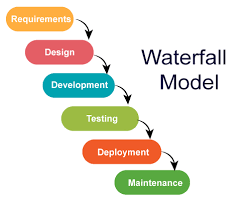Some of the commonly recognized models of Software Development Life Cycle (SDLC)are :
1.Waterfall Model:
A linear sequential approach where each phase must be completed before the next one begins.
Phases: Requirements, Design, Implementation, Testing, Deployment, Maintenance.
2.Spiral Model:
Combines elements of both the waterfall model and iterative model.
Emphasizes risk analysis and mitigation throughout the development process.
Progresses through multiple cycles, each with its own planning, risk analysis, engineering, and evaluation phases.
3.V-Model (Verification and Validation Model):
Extension of the waterfall model.
Each phase in the development life cycle has a corresponding testing phase.
Testing is emphasized at every stage of development.
4.Agile Model:
Iterative and incremental approach to software development.
Emphasizes collaboration, customer feedback, and flexibility.
Iterative cycles are short, typically lasting 2-4 weeks, called sprints.
Popular methodologies within Agile include Scrum, Kanban, and Extreme Programming (XP).
5.DevOps Model:
Integration of development and operations teams to improve collaboration and automation.
Emphasizes continuous integration, continuous delivery, and continuous deployment.
Aims to shorten the development life cycle and provide faster and more reliable software releases.
6.Iterative Model:
Development is divided into smaller, repeatable cycles, allowing for incremental improvements.
Each iteration results in a working version of the software.




